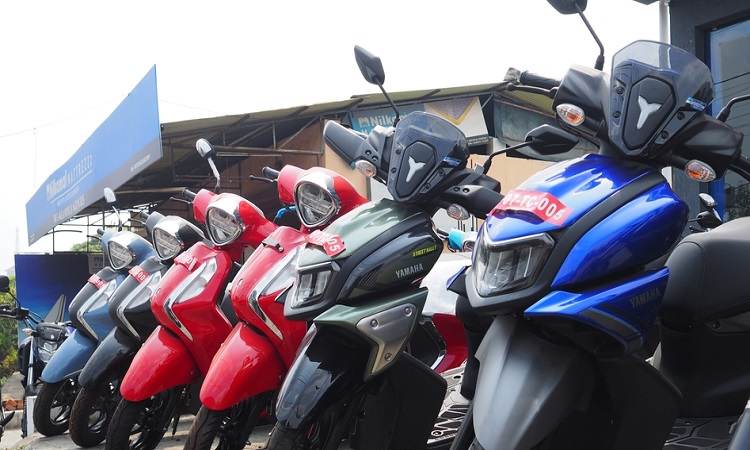How to Test Ride a Motorcycle
How to Test Ride a Motorcycle

A test ride is crucial when choosing a bike. It helps assess comfort, performance, and handling. Before you ride a motorcycle, ensure you have a valid licence, and safety gear. Also, consider two-wheeler insurance for added security.
How to Test Ride a Motorcycle Properly?
Follow the below tips to test-ride a bike.
Before the Ride
1. Check the Bike
Inspect the motorcycle for any signs of damage. Check tyre pressure, tread condition, fluid levels, brakes, and lights to ensure everything is in working order. A well-maintained bike offers a better riding experience.
2. Gear Up
Wearing proper riding gear is essential. A helmet, gloves, riding jacket, and sturdy boots protect you in case of an accident. Safety should always be a priority during a test ride.
3. Familiarise Yourself
Sit on the bike to understand its ergonomics. Get comfortable with the seating position, controls, and weight. Adjust the mirrors, locate the clutch, throttle, and brakes, and practice engaging the gears before starting the ride.
During the Ride
1. Low-Speed Manoeuvre
Start with slow-speed movements to gauge the bike’s balance. Practice U-turns and figure-eight movements to assess manoeuvrability.
2. Observe Handling
Pay close attention to how the motorcycle responds to inputs. Check if it leans smoothly into turns, absorbs road bumps, and offers stability while riding. A good bike should provide effortless control.
3. Explore the Gear Range
Shift through different gears to determine their responsiveness. The transitions should be smooth, without jerks or excessive engine strain.
4. Assess Braking Performance
Apply both front and rear brakes at different speeds. Evaluate how the bike reacts—quick stops should be controlled, without sudden jolts or excessive skidding.
5. Look for Unusual Sounds or Vibrations
Unusual noises or excessive vibrations may indicate mechanical issues. Listen for any rattling sounds, knocking noises, or inconsistent engine performance.
After the Ride
1. Review Your Experience
Reflect on how comfortable and confident you felt during the ride. Consider whether the bike meets your riding needs— commuting, touring, or performance riding.
2. Ask Questions
Discuss any concerns with the dealer, such as mileage, servicing costs, or modifications. If the test ride was satisfactory, check financing options and comprehensive two-wheeler insurance for full coverage.
Conclusion
A proper test ride ensures you choose the right bike. By evaluating comfort, performance, and safety, you can make an informed decision. Always prioritise safety and consider two-wheeler insurance to protect your investment.
Disclaimer: The above information is for illustrative purposes only. For more details, please refer to the policy wordings and prospectus before concluding the sales.
RELATED ARTICLES
10 Driving Guidelines That Can Save Your Life
Important two-wheeler riding tips for teenage drivers
How to be a good biker? Follow these 7 simple tips!
Tips For Riding A Two-Wheeler Safely On Indian Roads!










 Health Insurance
Health Insurance  Travel Insurance
Travel Insurance  Car Insurance
Car Insurance  Cyber Insurance
Cyber Insurance  Critical Illness Insurance
Critical Illness Insurance
 Pet Insurance
Pet Insurance
 Bike/Two Wheeler Insurance
Bike/Two Wheeler Insurance  Home Insurance
Home Insurance  Third Party Vehicle Ins.
Third Party Vehicle Ins.  Tractor Insurance
Tractor Insurance  Goods Carrying Vehicle Ins.
Goods Carrying Vehicle Ins.  Passenger Carrying Vehicle Ins.
Passenger Carrying Vehicle Ins.  Compulsory Personal Accident Insurance
Compulsory Personal Accident Insurance  Travel Insurance
Travel Insurance  Rural
Rural 











